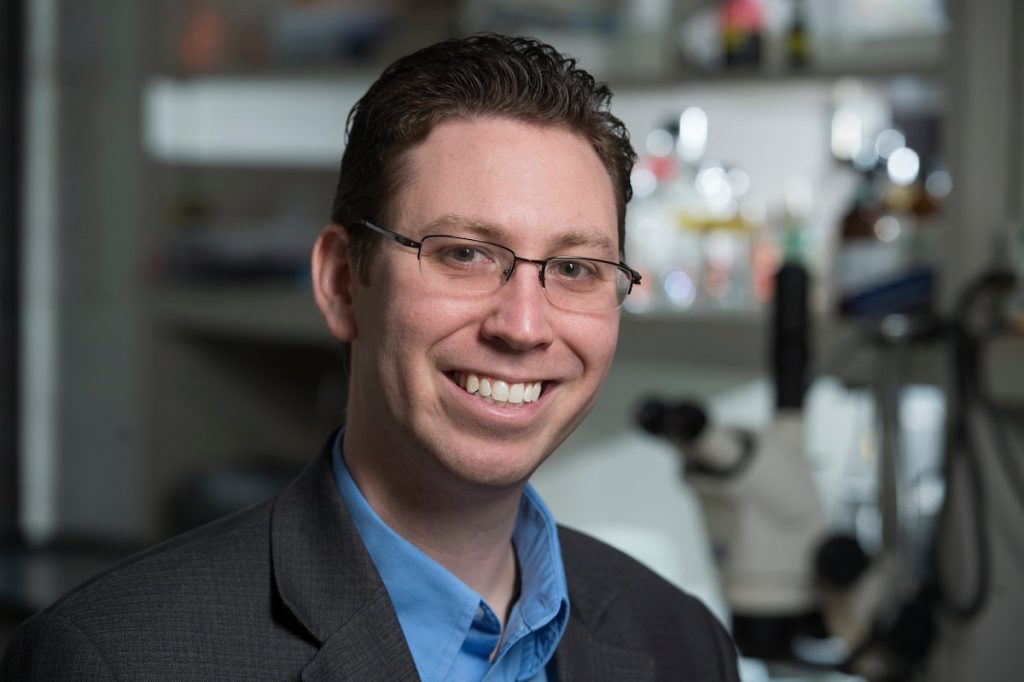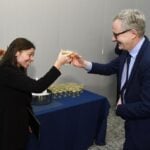Jordan Green installed as the Herschel L. Seder Professor in Biomedical Engineering

Jordan Green was named the Herschel L. Seder Professor in Biomedical Engineering during an installation ceremony on April 9, 2024 at the Homewood Campus.
Green currently serves as the vice chair for research and translation in the Department of Biomedical Engineering and previously served as the director of the undergraduate biomedical engineering program. He is the director of the Biomaterials and Drug Delivery Lab, the founding associate director of the Translational Tissue Engineering Center, and the founding associate director of the NCBIB Johns Hopkins Translational Immunoengineering Center. He is also an associate researcher in the Institute for NanoBioTechnology.
Green studies the design of biotechnologies for cellular engineering. Green and his lab design and synthesize new biomaterials and nanoparticle systems that can deliver biomolecules such as nucleic acids, peptides, proteins, sugars, and small molecules specifically to various cell types, including cancer cells, immune cells, and stem cells. His lab works to create innovative technologies and therapeutics that can directly benefit human health.
The Herschel L. Seder Professorship in Biomedical Engineering was established by the generosity of the late Herschel L. Seder, Engr ’39, through the Seder Family Foundation in 2001. Seder graduated from the School of Arts and Sciences in 1939 with a bachelor’s degree in economics. He played a pivotal role at the university, serving as a trustee for 20 years in addition to his participation on the advisory committees of the Whiting School of Engineering, the School of Advanced International Studies, and the Johns Hopkins Applied Physics Laboratory. Seder is often credited for playing a significant role in the university’s expansion into the field of biomedical engineering as well as for the School of Engineering’s separation as a distinct academic division in 1979. His son, Robert Seder, now serves on the biomedical engineering advisory board.
Story by the Department of Biomedical Engineering.
Latest Posts
-
 Cellular building blocks may enable new understanding of the body’s “machinery”
December 19, 2025
Cellular building blocks may enable new understanding of the body’s “machinery”
December 19, 2025
-
 Biomedical Engineer Jamie Spangler Receives President’s Frontier Award
December 15, 2025
Biomedical Engineer Jamie Spangler Receives President’s Frontier Award
December 15, 2025
-
 Johns Hopkins Postdoc Named in Forbes `30 Under 30′ List
December 8, 2025
Johns Hopkins Postdoc Named in Forbes `30 Under 30′ List
December 8, 2025


